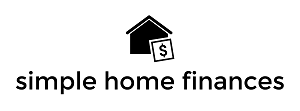NerdWallet reports personal debt continues to eat away our income even as our income is rising. For some, it may take over 10 years to pay off their debt.
There are some ways to increase your cash flow to help pay off debt faster:
Refinance your house and take out enough money to pay off your most costly credit cards
Get a consolidation loan to consolidate your debt at a much lower rate.
Use balance transfer credit cards to transfer your expensive cards at 0% interest for a predefined period, check here creditcards.com
On the Debt Management page, you can setup and manage up to 20 different loans. These can be any combination of credit cards (credit cards to be paid off that are no longer used, we treat these like an installment loan using your current minimum balance as the permanent amount you pay each month, for example $100 dollars today and every month in the future), installment loans (cars, boats, etc.), home equity loans (kitchen remodel,etc.), or mortgage(s).
Loans on the Debt Management page can be modeled for consolidation and be prioritized by either Highest Rate (Debt Stacking/Avalanche), Smallest Balance (Debt Snowballing) or Shortest Payback (our preferred approach). Pre- payment is then added to the highest priority debt to accelerate the payoff. The key difference between these methods is how you determine your target or top priority loan to payoff. This YouTube video shows how the payoff approach used by all methods works, click here debt stacking then scroll down to the YouTube video.
The Debt Spending Plan is connected to Debt Management and the top priority loan is highlighted on them both. On the Debt Spending Plan you can set the due day, mark bills as paid, define how bills are paid and apply the payment on loans on the Debt Management page to track your progress.
Below is the Loan Setup form, this is used to setup loans in Debt Management and these terms can be changed up until you apply payments to the loan.
Plan To Payoff your Debts
Here you model consolidating some bills to create cash flow then you later prioritize the pay back of one debt at a time following Debt Stacking/Avalanche (Highest Rate), Debt Snowballing (Smallest Balance) or prioritizing debt payback based on the Shortest Pack back time.
This is where you plan the payoff of your debts.
Manage the Payment of your Debts
The Debt Management page populates loan data on the Debt Spending page (below), This allows you to manage the payment of your loans and account for the costs. Here you set when the payment is due and account for the actual payments that are made.
This is where you manage the payment of your debts.
Track the pay back of your debts
The below image shows how you are able to apply a payment to a loan in the system. When you import the payment from a bank statement it will automatically update the payment on Debt Spending and the payment will be added here.
Quick tip: One way debt is accumulated is that there is no money set aside for unexpected expenses that occur, which then get added to a credit card.
In the Monthly Spending section there are two categories you can set money aside (Planned) for unexpected expenses, with both of these multiple expenses can be added manually or through the importing process. Another good thing to do is to build up an emergency fund for larger unexpected expenses like an expensive car repair.





